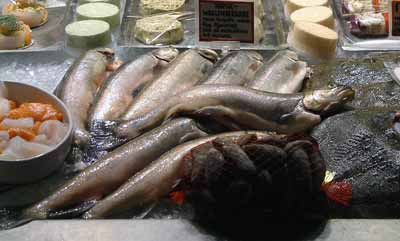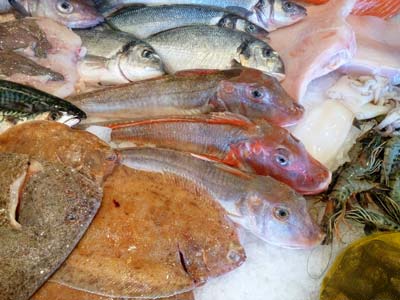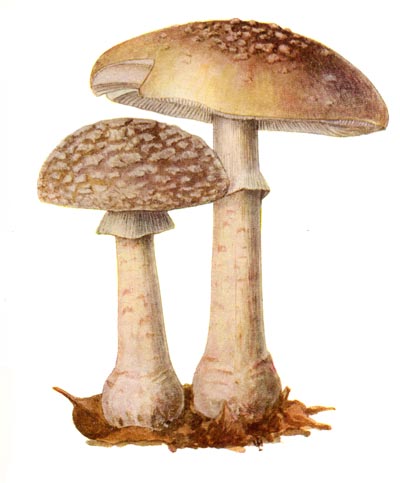
Fly agaric. A type of mushroom, the classic red with white spots. Famous for its psychoactive hallucinogenic properties this is the magic mushroom and is actually poisonous to eat.

Char(r) usually refers to the Arctic char, an uncommon freshwater fish of the same family as salmon, trout and related to grayling and the vendace or powan. It is found in rivers and lakes of northern Europe, north western United States and Canada and in the Great Lakes. They are migratory fish, like salmon and trout. They have a steely blue-grey back with salmon-pink speckles on the sides and a red underbelly. They have sweet firm flesh which varies from white to pink, dependent upon its own diet, and with good flavour, some say better than trout, being something like a cross between trout and salmon.

Red gurnard. Gurnards are strange-looking, scaly, spiky, bottom-feeding fish which use the three bottom rays of their pectoral fins to "feel" the sea bed. They have firm-textured white meat with a mild flavour. They are rich in protein, iodine and phosphorus. The red gurnard is the most attractive member of the family with pinkish-red colour and the finest flavour of the gurnards. They are all bony and tend to dryness so they are best served with a sauce. Small ones are excellent in soup. Red or grey mullet (US: striped mullet) can generally be subsituted for it, and are usually better.

The blusher. The one problem with this mushroom is that, whilst edible itself, it closely resembles others that are poisonous, including the death cap. It must be cooked as it contains a toxin which is destroyed by heat, like kidney beans. The most identifiable thing about it is that this reddish brown mushroom with pinkish grey scales and a white stem colours pink to red at sites of damage or bruising. The gills and flesh are white, also becoming red or pink on bruising. It is most commonly found in beech woods in summer to late autumn (US: fall). Also look closely at the ring on the stem. This should have lots of fine grooves on its upper side, unlike another poisonous mushroom which it closely resembles, the panther cap.